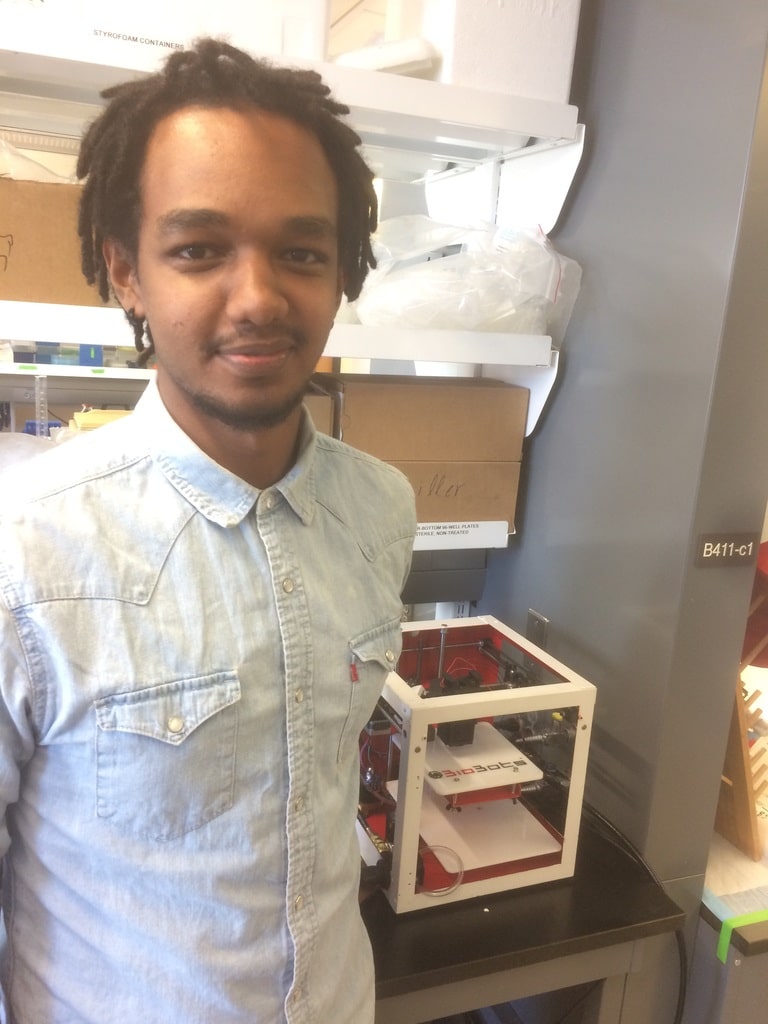
Allevi Blog
Allevi Author: Drexel University Studies Hydrogels
- Updated on April 13, 2020

Onto a very special #AlleviAuthor – our user Nathan Tessema Ersumo was an undergrad from Dr. Kara Spiller‘s Lab at Drexel University when he FIRST authored this paper that studies hydrogels.
Nathan used the Allevi BetaBot to study the mechanical properties of different hydrogels for applications within tissue engineering. There are still many unknowns about the mechanical properties of biomaterials before and after printing. Nathan’s paper studies the the differences in the Young’s moduli between bioprinted and molded constructs. The Spiller lab at Drexel University studies hydrogels that can be used in wound healing and Nathan is an early adopter of bioprinting for these applications.
We’re especially proud of this work because it highlights a core aspect of our mission here at Allevi; accessibility. We design our platforms to be accessible and affordable to everyone in the lab. That versatility and ease of use makes it possible to make novel discoveries like this one and to #buildwithlife (even during the undergrad years).
You can download and read the publication here
The mechanical properties of hydrogels used in biomaterials and tissue engineering applications are critical determinants of their functionality. Despite the recent rise of additive manufacturing, and specifically extrusion-based bioprinting, as a prominent biofabrication method, comprehensive studies investigating the mechanical behavior of extruded constructs remain lacking. To address this gap in knowledge, we compared the mechanical properties and swelling properties of crosslinked gelatin-based hydrogels prepared by conventional molding techniques or by 3D bioprinting using a BioBots Beta pneumatic extruder. A preliminary characterization of the impact of bioprinting parameters on construct properties revealed that both Young’s modulus and optimal extruding pressure increased with polymer content, and that printing resolution increased with both printing speed and nozzle gauge. High viability (>95%) of encapsulated NIH 3T3 fibroblasts confirmed the cytocompatibility of the construct preparation process. Interestingly, the Young’s moduli of extruded and molded constructs were not different, but extruded constructs did show increases in both the rate and extent of time-dependent mechanical behavior observed in creep. Despite similar polymer densities, extruded hydrogels showed greater swelling over time compared to molded hydrogels, suggesting that differences in creep behavior derived from differences in microstructure and fluid flow. Because of the crucial roles of time-dependent mechanical properties, fluid flow, and swelling properties on tissue and cell behavior, these findings highlight the need for greater consideration of the effects of the extrusion process on hydrogel properties.

